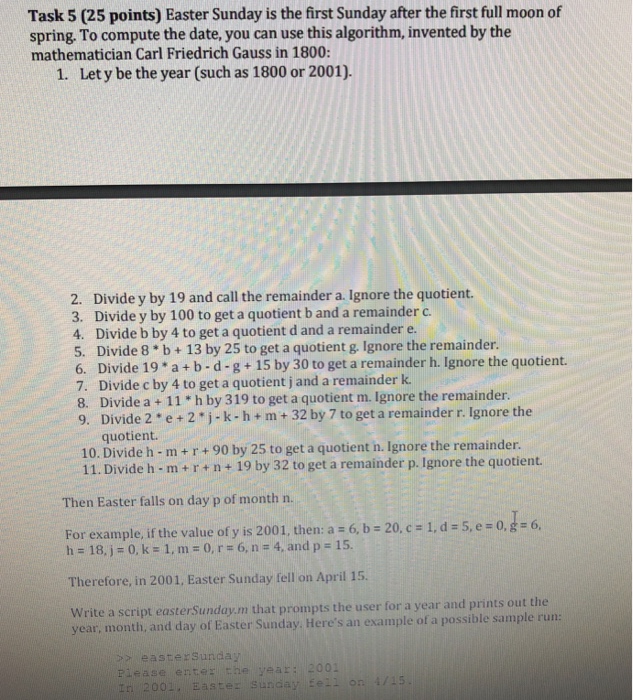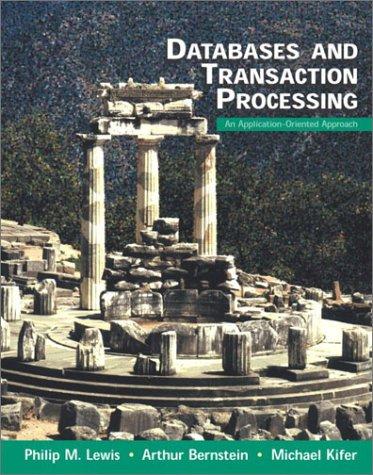Answered step by step
Verified Expert Solution
Question
1 Approved Answer
Please answer this using Matlab Task 5 (25 points) Easter Sunday is the first Sunday after the first full moon of spring To compute the
Please answer this using Matlab 
Task 5 (25 points) Easter Sunday is the first Sunday after the first full moon of spring To compute the date, you can use this algorithm, invented by the mathematician Carl Friedrich Gauss in 1800: 1. Lety be the year (such as 1800 or 2001). 2. Divide y by 19 and call the remainder a. Ignore the quotient. 3. Divide y by 100 to get a quotient b and a remainder c. 4. Divide b by 4 to get a quotient d and a remainder e. 5. Divide 8 b 13 by 25 to get a quotient g. Ignore the remainder. 6. Divide 19 a+ b-d-g + 15 by 30 to get a remainder h. Ignore the quotient. 7. Divide c by 4 to get a quotient j and a remainder k 8. Divide a 11*h by 319 to get a quotient m. Ignore the remainder 9. Divide 2*e 2j-k-h+m +32 by 7 to get a remainder r. Ignore the quotient. 10. Divide h-m+r+90 by 25 to get a quotient h. Ignore the remainder. 11. Divide h - m +r+n 19 by 32 to get a remainder p. Ignore the quotient. Then Easter falls on day p of month n. For exaln ple, if the value of y is 2001, then: a , b-20, c 1, d = 5, e-o,k-6, h=18. j = 0, k = 1, m = 0, r = 6, n = 4, and p : 15 Therefore, in 2001, Easter Sunday fell on April 15 Write a script easterSunday m that prompts the user for a year and prints out the year, month, and day of Easter Sunday. Here's an example of a possible sample run: i eastersunda ase enteFl the year: 2001 
Step by Step Solution
There are 3 Steps involved in it
Step: 1

Get Instant Access to Expert-Tailored Solutions
See step-by-step solutions with expert insights and AI powered tools for academic success
Step: 2

Step: 3

Ace Your Homework with AI
Get the answers you need in no time with our AI-driven, step-by-step assistance
Get Started


